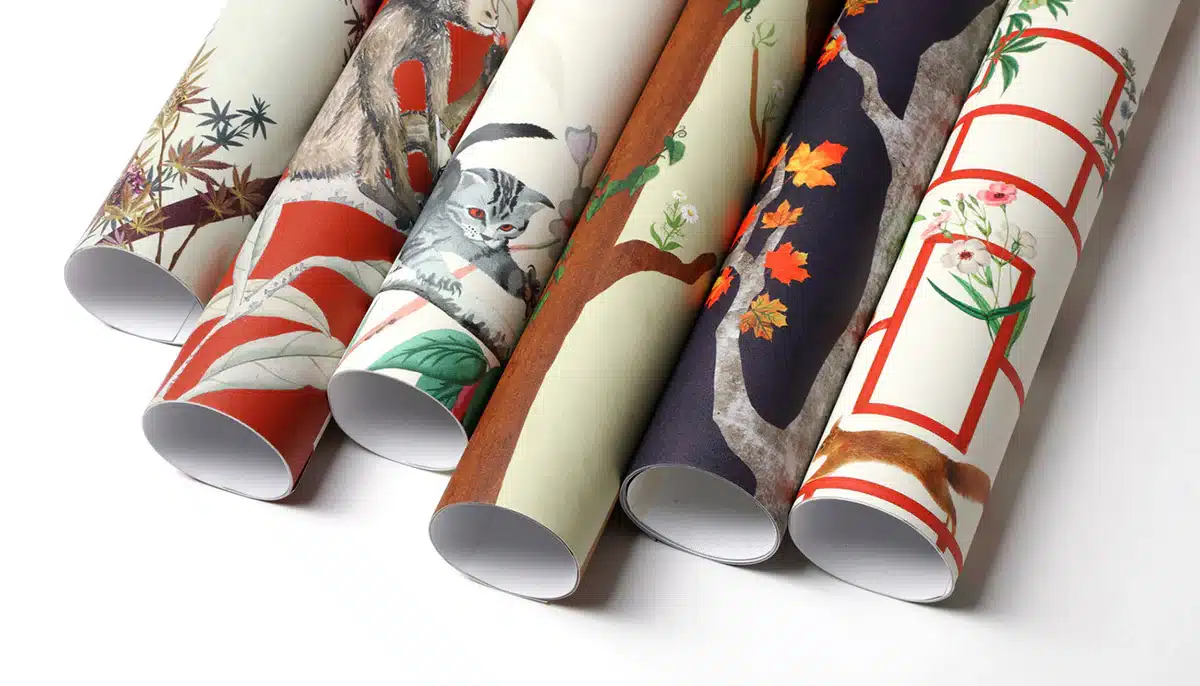Your client has entrusted you to put ink on paper. Now you have the opportunity to make something beautiful, exceptional and enduring. Paper is not an afterthought – it is an inseparable part of the whole – a design element just as message, color, typeface, layout and image.
There’s one truth to fine printing, it’s a complex process with many variables.
While perfectly consistent images have become more easily achievable through the modern digital workflow, the final print result is still dependent on the nature of ink, paper and press conditions. Consumables like paper stock, ink vehicles/colorants, and fountain solutions — not to mention the temperature and humidity in the press room — all have an effect on the final result.
Paper may contain hardwood, softwood, eucalyptus, cotton and other natural fibers. The pulp is softened, fibrillated and combined with minerals, binders and water to allow it to form into a matted web on a moving continuous mesh screen called the wire.
This slurry begins on the paper machine as 99.5% water. By the time it reaches the end of the machine, it is reduced to roughly 5% moisture through oscillation, gravity, pressing and evaporation. The physical properties of the finished product are developed along the wire, through the felt and press units and finally through the calendar stack.
The Importance of Side-to-Side Consistency
One of the biggest challenges to papermakers is ensuring the surface characteristics are the same on each side. The design of the paper machine and the quality of the fibers, binders and fillers are the biggest contributors to the quality of the final product. If the smoothness and ink holdout varies, it’s hard for the printer to produce an identical print result.
Matching photographic images that ‘crossover’ from one signature to the next in an open spread of a book is especially difficult. Beautiful even solids – especially single hits of spot colors – may only be achieved when using paper that is consistent from side-to-side.
Differences Between Paper Machines
No two paper machines are identical – each has its own strengths and weakness, so each paper grade made on that machine is unique. The surface characteristics of the paper are dependent on the machine it is made on.
Integrated paper mills, making their own pulps, are often beholden to their own wood pulp supply and that limits the variety of products they are able to make. Technical/specialty mills like Monadnock are non-integrated – they purchase the pulps they use from a broad range of independent sources. This allows them to design a “recipe” of pulps with exactly the right characteristics for the product.
In the case of Monadnock, pulp blends have been perfected over the years to achieve optimal characteristics like formation and uniformity.
Design for Uniformity
Besides selecting the finest raw materials, Monadnock has specially engineered its process to refine its pulps and to condition both sides of the paper in exactly the same way as it moves through the paper machine. The entire process has been perfected to achieve formation and uniformity that is the envy of the paper industry.
Get your Monadnock Swatchbook today.







